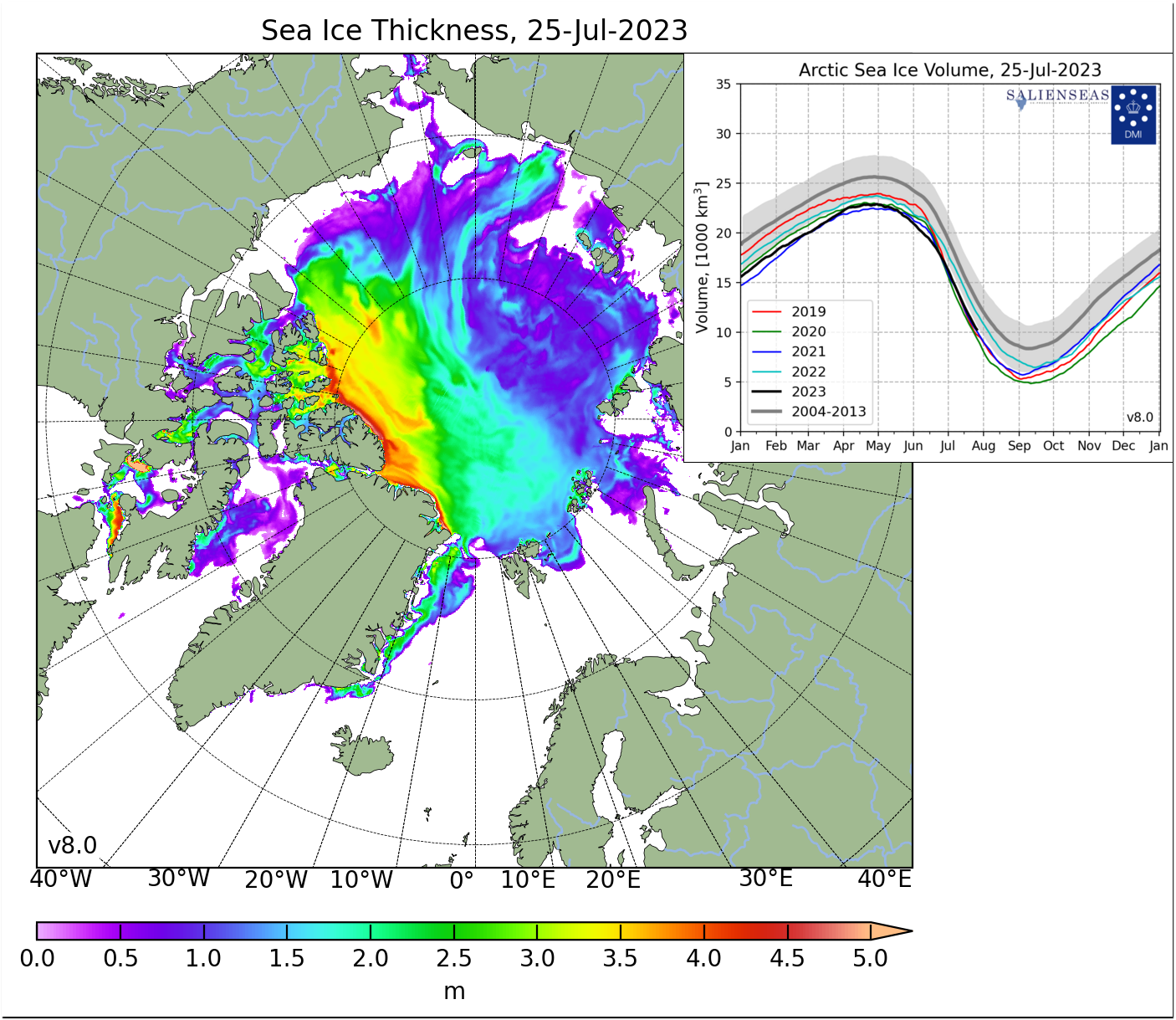In 1958, Arctic sea ice was about two meters thick. Sixty-five years later it is still about two meters thick.
“The New York Times
SUNDAY, OCTOBER 19, 1958
Although the idea that a solid ice sheet covers the central Arctic has lingered stubbornly in the popular fancy, the northern cap of ice worn by our planet is actually a thin crust— on the whole, only about seven feet thick—over an ocean two miles deep in places.
Known as the pack, this ice is constantly shifting, splitting, changing. The sea upon which it rides is bounded by the northern coasts of Europe, Asia and North America—vast stretches of tundra (where no trees are able to grow) and taiga (where the trees are stunted).
The only major land-borne ice sheet in the north covers Greenland. Such is the weight of the Greenland ice that the island has sunk into the plastic underlayers of the earth until its center is now below sea level, under 10,000 feet of ice. There are scattered, smaller ice caps in the Arctic, but most of Siberia, Alaska and northern Canada, is ice-free.”



